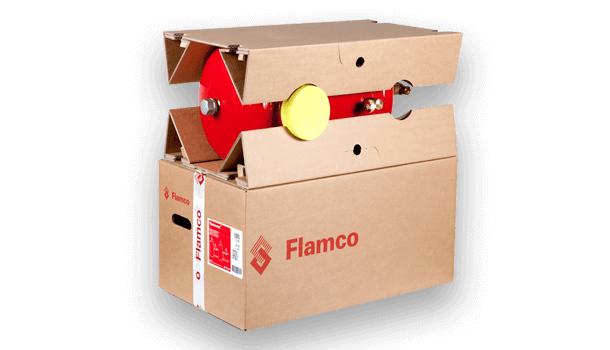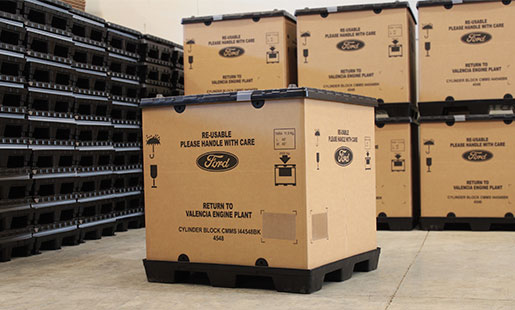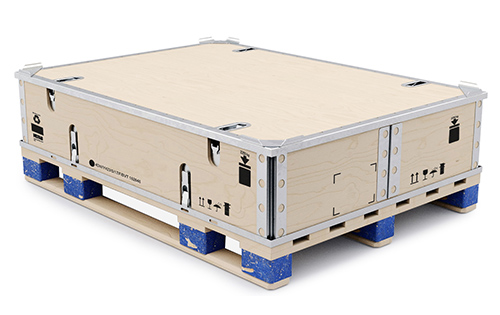High quality in Every Mold: Plastic Container Manufacturer Knowledge
Reliable Industrial Recycling Solutions for Lasting Packaging: A Comprehensive Guide
That's where this detailed guide on reliable industrial recycling solutions for lasting packaging comes in. By discovering crucial areas such as product packaging product selection, making for recyclability, implementing reusing facilities, collaborating with recycling companions, and tracking and measuring reusing success, this overview will furnish you with the understanding and tools needed to make educated choices and drive positive modification within your company. Whether you're a packaging specialist, sustainability manager, or just interested in the subject, this guide will give useful understandings and techniques to aid you navigate the globe of sustainable product packaging.
Packaging Material Selection
The choice of product packaging products plays a critical function in guaranteeing the sustainability of commercial reusing solutions. The selection of products is vital in lessening ecological influence and making best use of reusing performance when it comes to sustainable packaging. Selecting the appropriate products can aid minimize waste generation, conserve sources, and promote a circular economy.
One vital aspect to think about in packaging product selection is recyclability - plastic container manufacturer. Products that can be easily recycled and included back right into the manufacturing cycle are favored. As an example, materials like cardboard, paper, glass, and certain kinds of plastics can be recycled numerous times without shedding their quality. On the various other hand, materials that are tough to reuse, such as mixed plastics or non-recyclable compounds, can produce difficulties for the reusing procedure and might wind up in landfills or burners.
Another consideration is making use of eco-friendly and eco-friendly materials. Packaging made from renewable resources, such as plant-based plastics or biopolymers, can help in reducing dependency on fossil fuels and mitigate climate modification. In addition, eco-friendly products break down normally over time, minimizing the accumulation of waste in garbage dumps.
Moreover, the weight and quantity of packaging materials need to be lessened to lower transport expenses and energy usage. Light-weight products not just call for less sources during production however additionally contribute to reduce carbon exhausts throughout transport.
Designing for Recyclability
Product packaging designers ought to prioritize the usage of products that are commonly accepted for reusing and have actually developed recycling facilities. Materials such as glass, light weight aluminum, and specific types of plastic, like PET and HDPE, are commonly reused and must be liked over materials that are tough or expensive to reuse.
Another important consideration in creating for recyclability is the removal of unnecessary parts or materials. By minimizing the variety of layers, coverings, and added elements, product packaging can be made easier and less complicated to recycle. In addition, designers must aim to minimize the use of combined products, as they can complicate the reusing process.

Implementing Recycling Framework
Efficient execution of recycling framework is important for the success of industrial recycling remedies. Without proper facilities in place, the recycling procedure becomes ineffective and inadequate, preventing the overall goal of lasting product packaging.
To implement recycling framework effectively, several vital aspects need to be considered. There must be an efficient collection system that promotes the splitting up and collection of recyclable products. This can consist of designated recycling bins in public spaces, as well as partnerships with waste administration business for curbside pick-up and sorting.
When accumulated, the recyclable products require to be transported to recycling facilities in a timely manner. This requires efficient logistics and transportation networks, guaranteeing that the materials reach the suitable facilities immediately.
At the reusing centers, advanced sorting and handling modern technologies ought to be in area to divide various sorts of products properly. This consists of making use of automated arranging makers, optical scanners, and hand-operated sorting techniques.
Furthermore, there ought to be a robust market demand for recycled products. This can be accomplished with partnerships with producers and industrial packaging solutions industries that use recycled products in their manufacturing processes. Creating a secure market for recycled products incentivizes the recycling industry and advertises the round economy.
Collaborating With Recycling Allies

One secret facet of working together with recycling partners is the facility of clear communication networks. It is very important to develop open lines of interaction to promote the exchange of info, updates, and feedback. This enables both events to stay notified concerning the progress of reusing campaigns and address any obstacles or issues that may emerge.
Furthermore, collaboration can include collaborations in designing and applying recycling programs. Reusing partners can give beneficial understandings and advice in creating effective collection systems and determining the most appropriate recycling modern technologies. By interacting, services and recycling companions can optimize the reusing process and lessen waste.
Moreover, partnership can extend beyond the functional elements of reusing. It can also encompass advocacy and education campaigns. By joining forces, services and recycling companions can elevate awareness about the relevance of recycling and advertise the adoption of lasting packaging practices among consumers and other stakeholders.
Monitoring and Measuring Recycling Success
To ensure the efficiency of industrial reusing options and the achievement of sustainable packaging objectives, it is essential for companies and their recycling companions to develop a detailed system for tracking and measuring recycling success (processing company). Tracking and determining recycling success allows services to analyze the influence of their recycling efforts, identify locations for enhancement, and established meaningful targets for future development
One method to track reusing success is through the usage of information collection and evaluation devices. By accumulating information on the amount of packaging waste produced, the percent of waste that is reused, and the types of products being recycled, companies can obtain important insights into their reusing performance. This information can after that be evaluated to determine patterns, patterns, and locations of inefficiency.
An additional crucial element of tracking and gauging reusing success is developing standardized and clear metrics. This allows services to compare their performance versus industry benchmarks and track their development gradually. Metrics such as reusing rates, waste diversion rates, and greenhouse gas exhausts can provide a quantitative measure of a company's recycling success.

Conclusion
In conclusion, implementing effective industrial recycling remedies for lasting packaging calls for cautious consideration of product packaging product choice, making for recyclability, applying reusing framework, collaborating with recycling companions, and tracking and measuring reusing success. By incorporating these techniques, services can contribute to an extra sustainable and environmentally-friendly approach to product packaging, reducing waste and advertising the round economy.
By checking out essential areas such as product packaging material choice, making for recyclability, carrying out recycling facilities, working together with reusing partners, and monitoring and determining reusing success, this overview will certainly outfit you with the knowledge and tools required to make informed choices and drive favorable change within your organization. Packaging designers should prioritize the usage of products that are widely approved for reusing and have developed reusing infrastructures.Collaboration with recycling companions is essential for the successful execution of industrial recycling remedies and the achievement of lasting packaging goals. By signing up with forces, organizations and reusing partners can elevate understanding regarding the importance of recycling and advertise the adoption of sustainable packaging techniques amongst customers and various other stakeholders.
By accumulating data on the quantity of product packaging waste produced, the percent of waste that is recycled, and the types of products being reused, organizations can get important understandings right into their recycling performance.